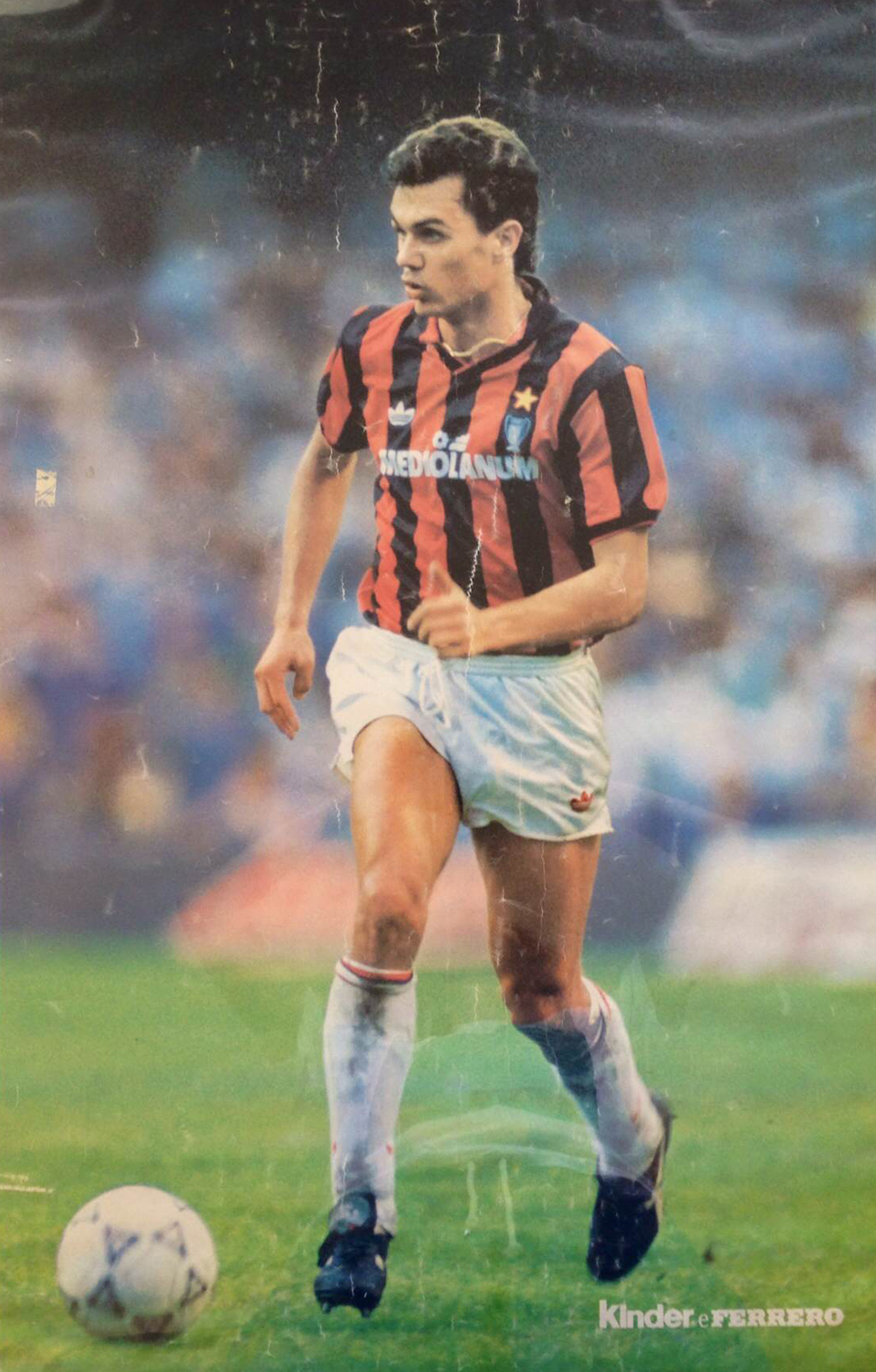Coming soon…
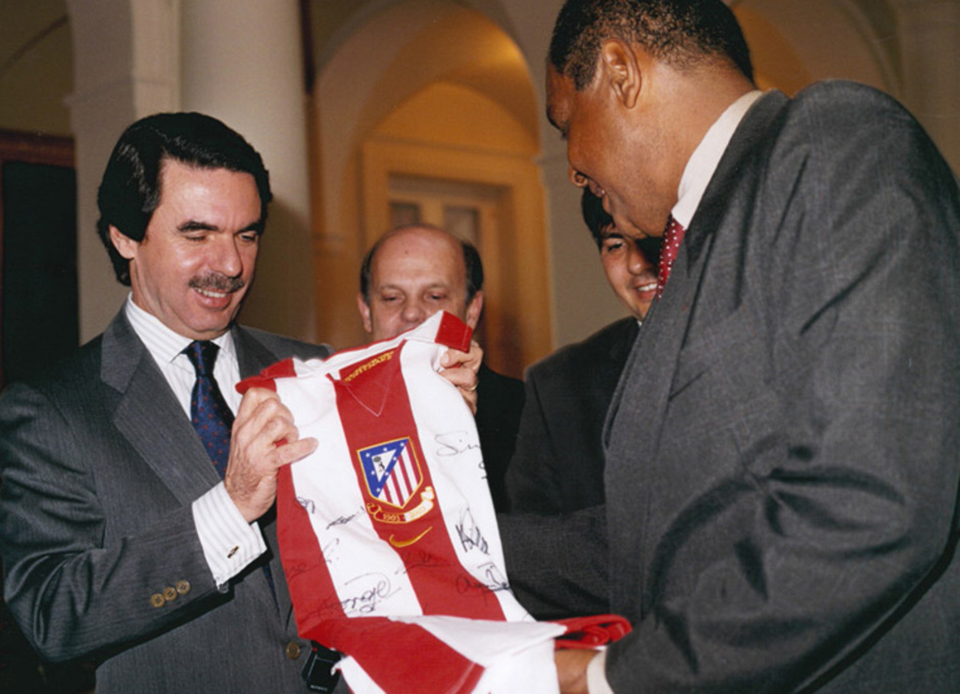

Coming soon…
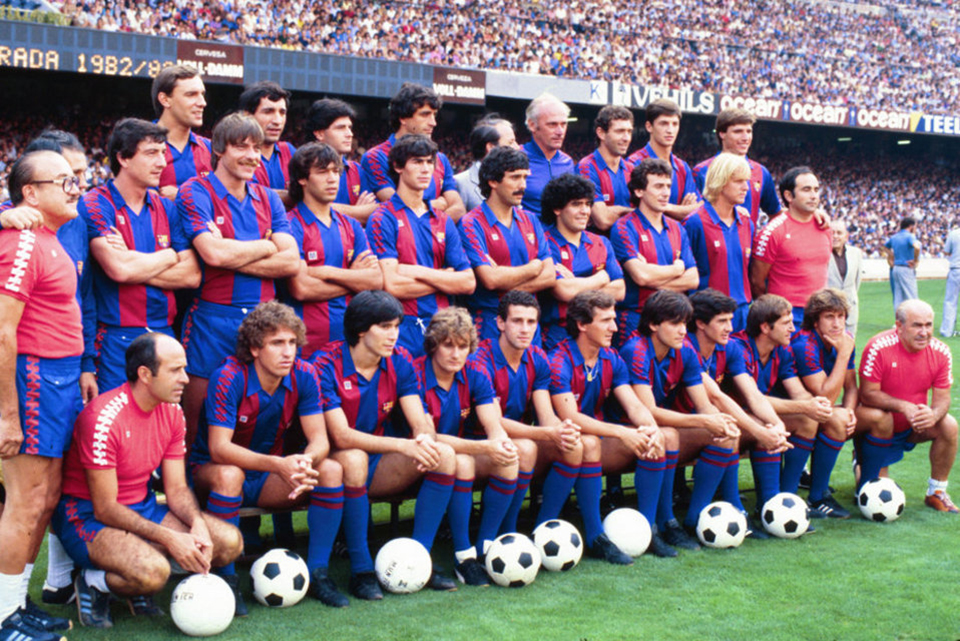
Més que un club. It’s a motto of which FC Barcelona’s fans, directors and marketing department persistently remind us, but not without justification: in European football the club has always been something of an anomaly. As is perhaps to be expected for a club that exists as the world’s most positive and visible source of Catalan pride, Barça have always tended to have their own way of doing things. For a long time these differences extended to the team’s kit. Famously, Barcelona were the last major club in the modern era not to sully their shirt with a commercial sponsor. It seems hard to believe given today’s all too frequent Nike efforts, but not too long ago the blaugrana strip barely changed over the course of a decade. Produced by the Spanish company Meyba, this classic kit was (along with an innate dislike for Real Madrid) one of the few constants at the Camp Nou in the 1980s. The shirt is often listed as dating from 1984-89, but I see no difference in the kits worn either side of that period, which leaves me convinced that it remained unchanged for nine seasons between 1981 and 1990.
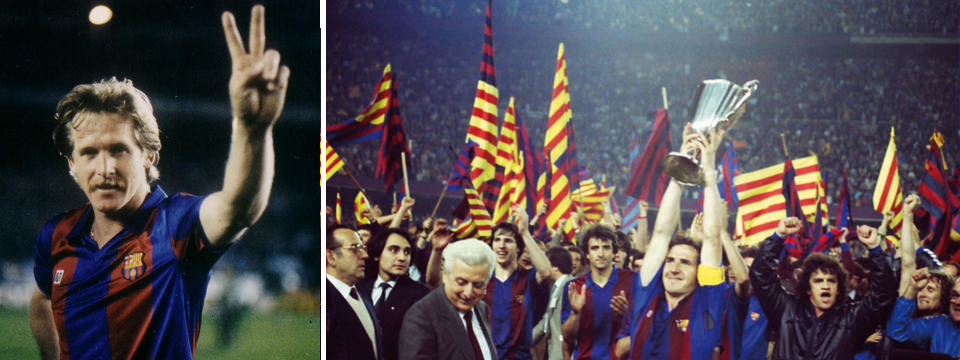
For the team it was a turbulent period characterised by strained relationships and only sporadic on-field success, not to mention a slew of big-money signings and big-name managerial casualties. The first of these was the aging Argentine Helenio Herrera, who despite picking up a Copa del Rey with Barça in 1981, could only lead the team to a disappointing fifth-place league finish. Herrera’s replacement was Udo Lattek. The West German maintained a prickly relationship with compatriot Bernd Schuster, but reignited a bond with the Danish forward Allan Simonsen — an old acquaintance from Lattek’s days at Borussia Mönchengladbach. Barcelona reached the final of the 1982 European Cup Winners’ Cup, which just so happened to be hosted that year at the Camp Nou. Though they went behind against Standard Liege, Barça’s home advantage eventually proved the difference, and goals from Simonsen and veteran striker Quini clinched the victory. Though the Catalans finished a close second to Real Sociedad in the league — with Quini securing the Pichichi top scorer trophy for the third season in a row — the Liga title continued to elude them.
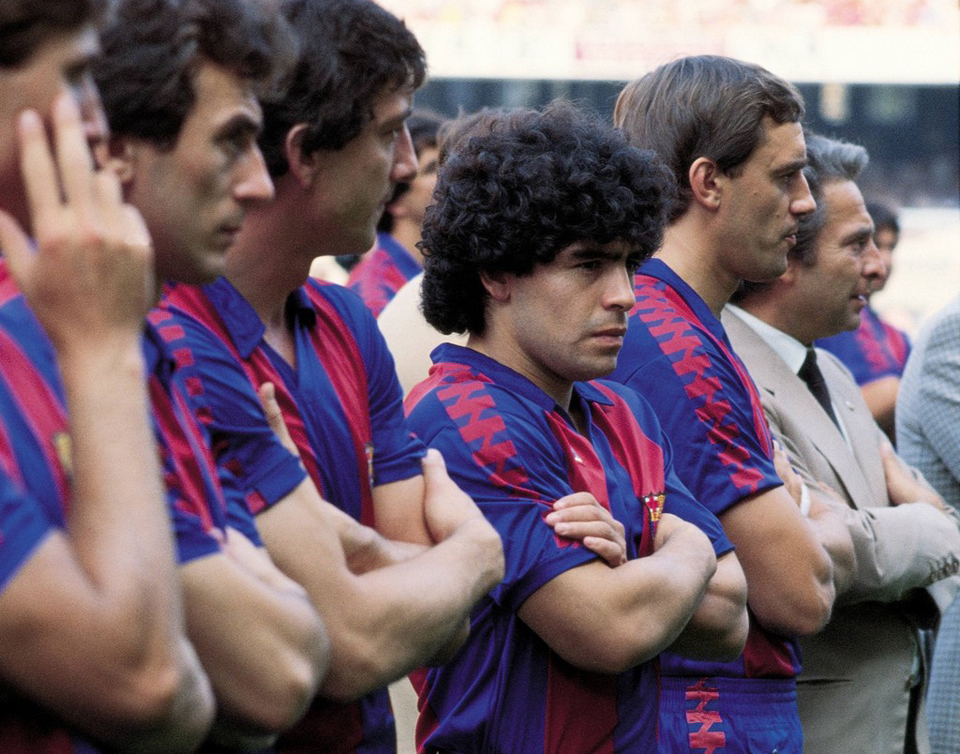
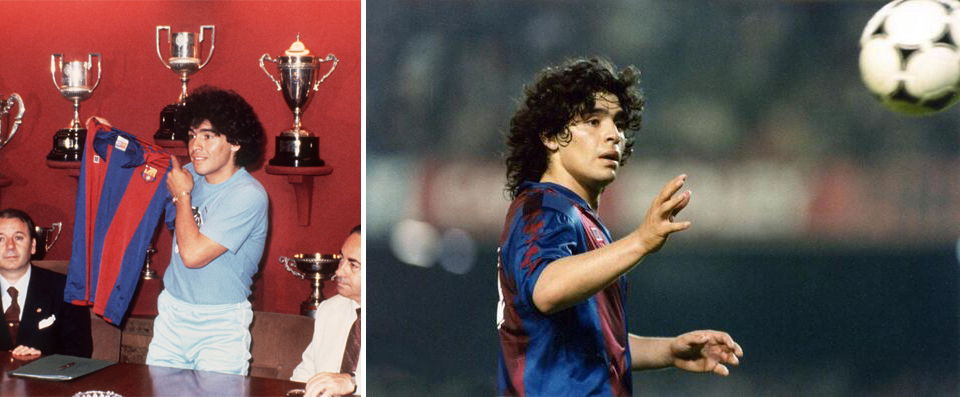
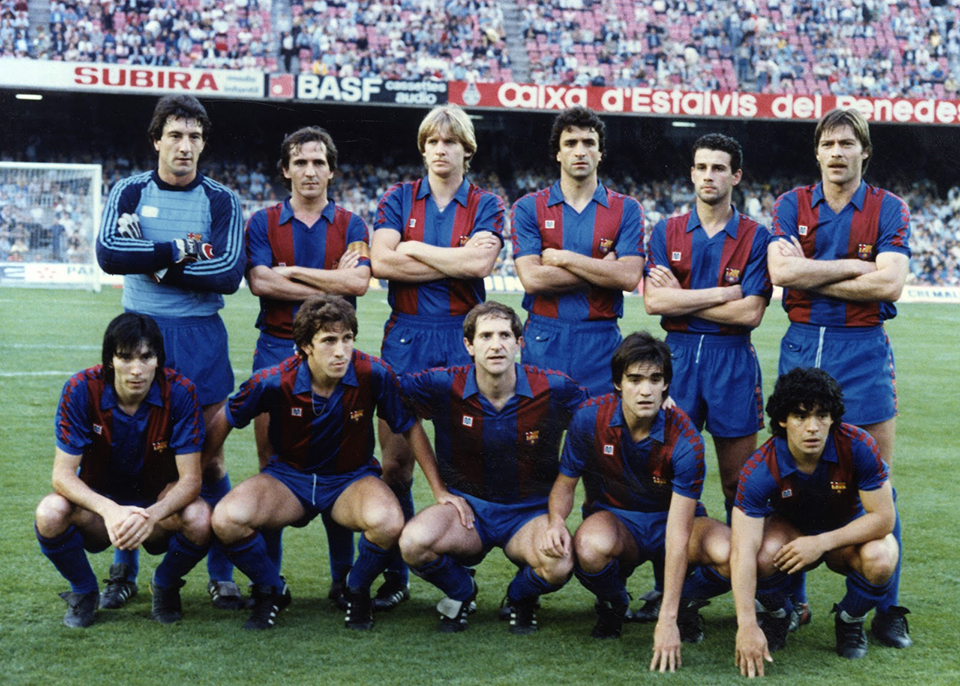
Back row: Urruti, Sanchez, Schuster, Alexanko, Julio Alberto, Migueli; Front row: Carrasco, Victor, Alonso, Marcos, Maradona.
The plan to change that came in the shape of Diego Maradona, who arrived at Barcelona in the summer of 1982. The fee paid to Boca Juniors was a then-record £5 million, but the greatest player in the world seemed worth every penny, at least according to Barcelona’s elected president, Josep Lluís Núñez. Unfortunately the Argentine’s first season in Spain was plagued by a bout of hepatitis, causing him to spend three months on the sidelines. Maradona recovered in time to help Barcelona beat Real Madrid in the final of both cup competitions (the Copa del Rey and the Copa de la Liga), but they could only manage fourth in the league. Lattek departed that summer, and in stepped chain-smoking Argentine César Luis Menotti. Known as “El Flaco”, Menotti had coached Argentina at the last two World Cups; it was hoped that this factor that would help him bring out the best in Maradona. That plan was thrown into jeopardy just four games into the new season, when a reckless tackle by Athletic Bilbao’s Andoni Goikoetxea left the Argentine with a broken ankle. Maradona returned in time to play his part in a shockingly violent Copa del Rey final also against Bilbao, but it was a relatively meagre third place finish in the league that sealed Menotti’s fate.
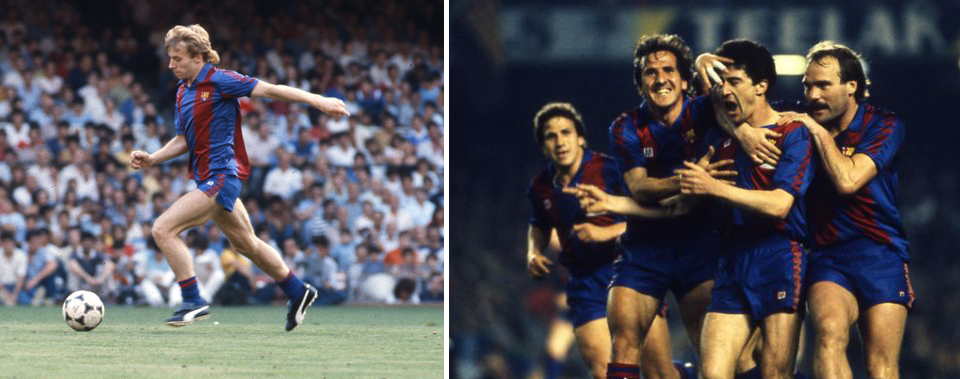
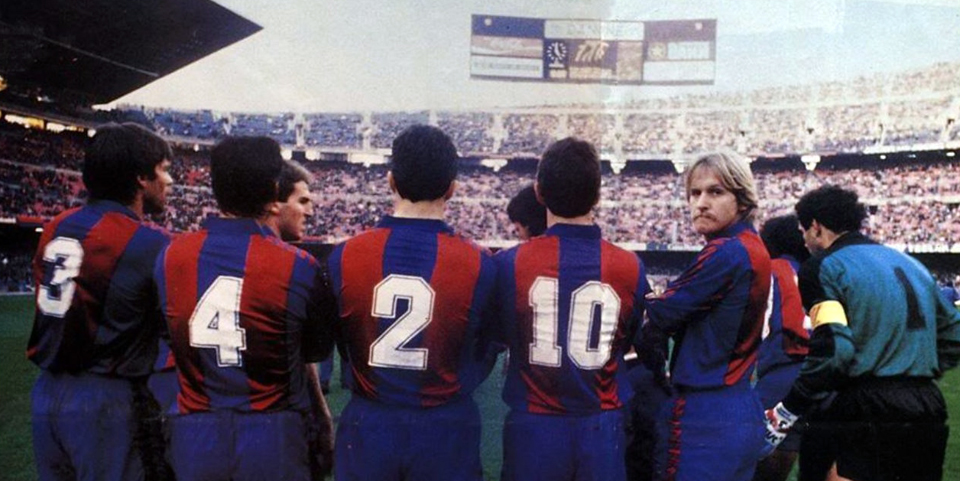
Impressive results with Queens Park Rangers, and an endorsement from England coach Bobby Robson, helped Terry Venables’ fill the vacant seat on the bench at Barça. With Maradona having left that summer for Napoli, “El Tel” built his team around a strong back four, the commanding Schuster in midfield and a fellow Brit up front: Scottish striker Steve Archibald. It proved a winning combination, as Barça galloped to a tenth title — their first since 1974 — with a ten-point lead over Atlético Madrid. Venables’ was no one-season wonder: his team boasted a nucleus of Spanish internationals, including Victor, Migueli, Julio Alberto, Caldere, Marcos and Carrasco. The side proved strong enough to reach the European Cup Final for only the second time in 1986. Their opponents in Seville were the talented Romanians of Steaua Bucharest. A typically close final ended goalless after extra-time and Barcelona’s lacklustre display was confounded by a remarkable penalty shoot-out, in which they saw all four of their penalties saved by Steaua keeper Helmuth Duckadam.
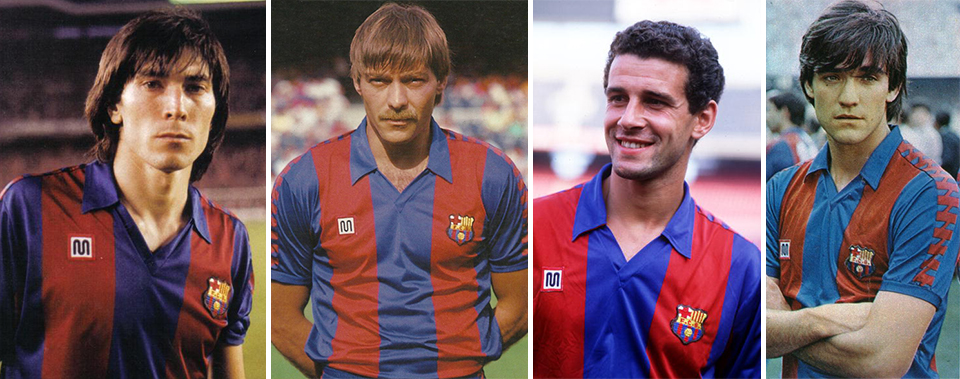
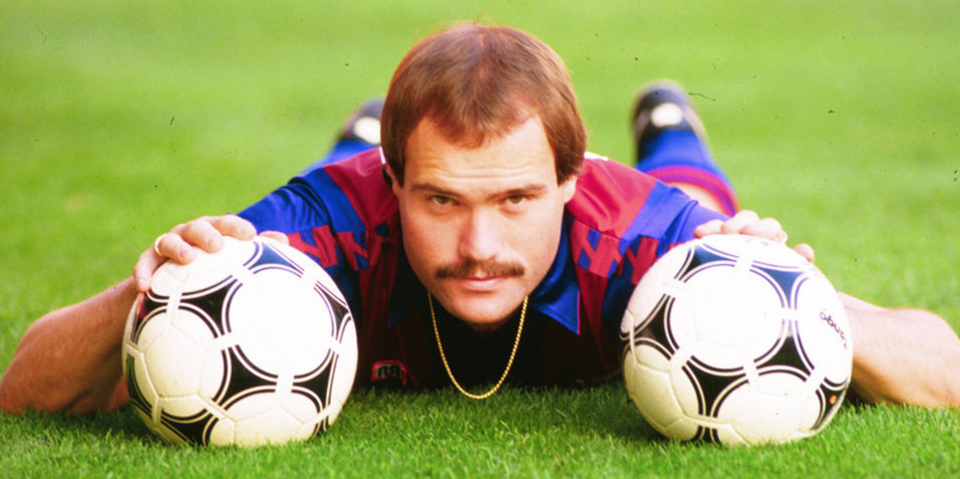
Carrasco, Migueli, Julio Alberto, Marcos and Caldere.
Keen to recover from that blow, Venables signed two stars of that summer’s World Cup: Spain goalkeeper Andoni Zubizarreta (who would replace the veteran Urruti) and England centre-forward Gary Lineker. Fresh from having won the Golden Boot in Mexico, Lineker was expected to form a deadly partnership alongside Mark Hughes, who had arrived from Manchester United. Unfortunately the Welshman failed to settle in Catalonia, earning himself the pejorative nickname “El Toro” before being swiftly loaned out to Bayern Munich after a single season. Lineker on the other hand quickly made himself at home, and immediately endeared himself to the Barcelona faithful by scoring on his league debut after just two minutes. Later that season “El Matador” bagged a memorable hat-trick against Real Madrid, further cementing his place in Catalan hearts. But despite Lineker’s prolific goalscoring Barça were pipped to the title by Real Madrid for the second year running, this time by just a single point. However it was the ignominy of home and away defeats to Dundee in the UEFA Cup quarter-final later that season that most likely cost Venables his job just a few weeks into the 1987-88 campaign.
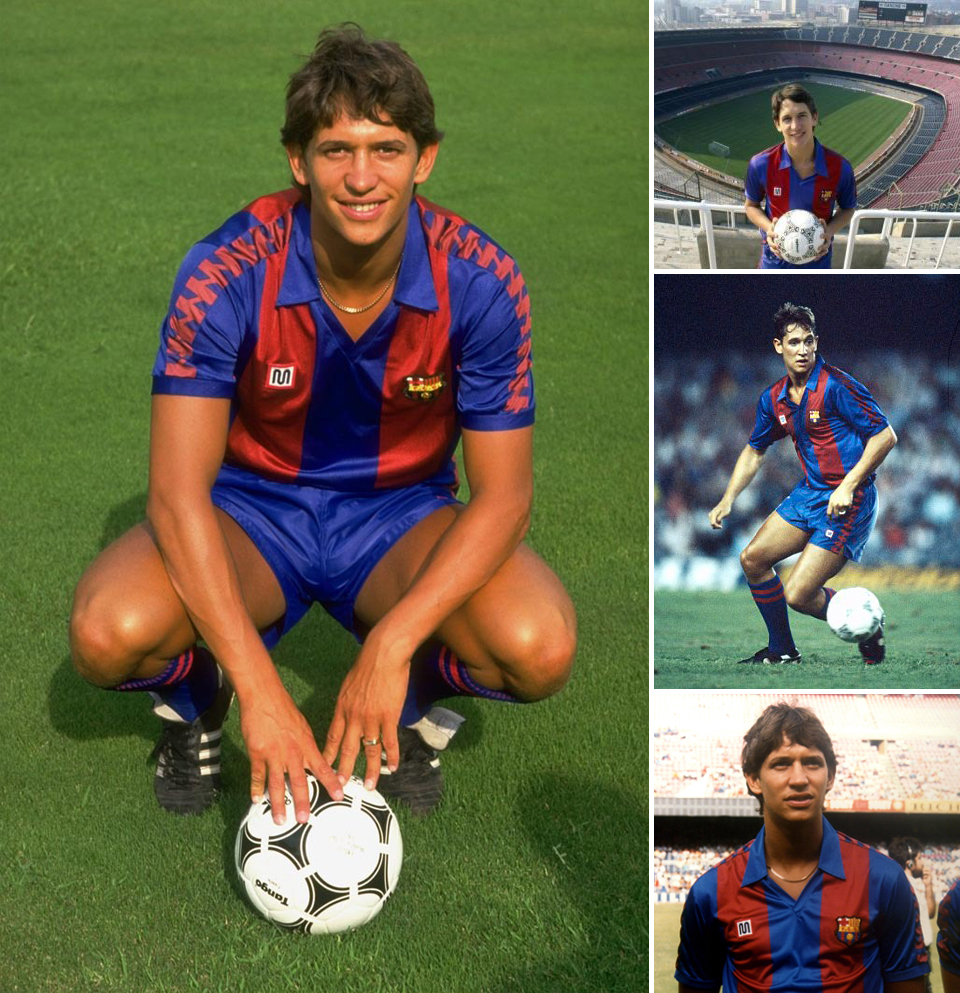
The Englishman’s caretaker replacement, Luis Aragonés, remained in charge for the rest of the what proved a tumultuous season on and off the pitch. A government clampdown on tax evasion had seen players asked to have their wages cut in order for the club to repay what they owed the authorities. The row reached its climax in April 1988 when the bulk of the squad convened at the Hotel Heredia calling on Nuñez to resign. In the end the president stayed, with most of his players departing instead. It was clearly time for a fresh start, and the man handed the task of leading Barça into a much-needed new era was Johan Cruyff. With a steadfast conviction in his footballing philosophy, the Dutchman introduced a style of play that had its roots in the Total Football of Ajax. The new manager seemed less than taken with the team he inherited, moulding his new side around several new players: Bakero, Goikoetxea, Amor, Beguiristain and Salinas. Victor, Schuster and Archibald all left the club, while Cruyff preferred the tall Salinas as a target man up front, forcing Lineker out wide on the right wing. From his new position the Englishman inevitably found the net less frequently, but did provide the cross for Barcelona’s first goal in the 1989 European Cup Winners’ Cup Final, in which they beat Sampdoria 2-0.
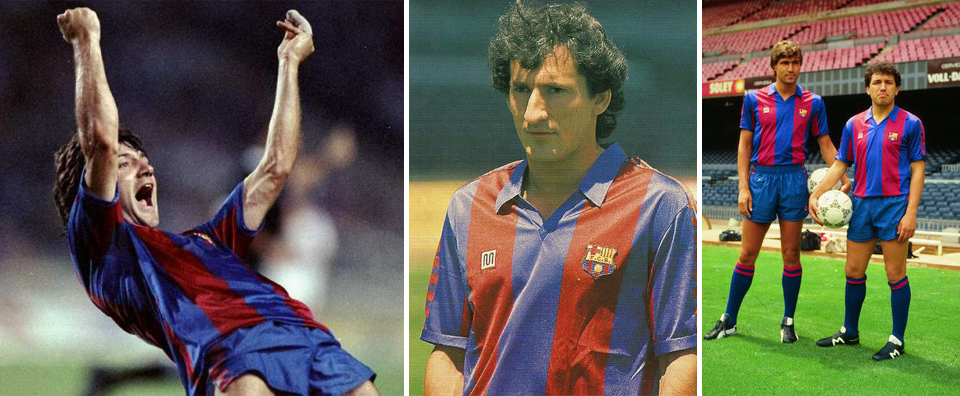
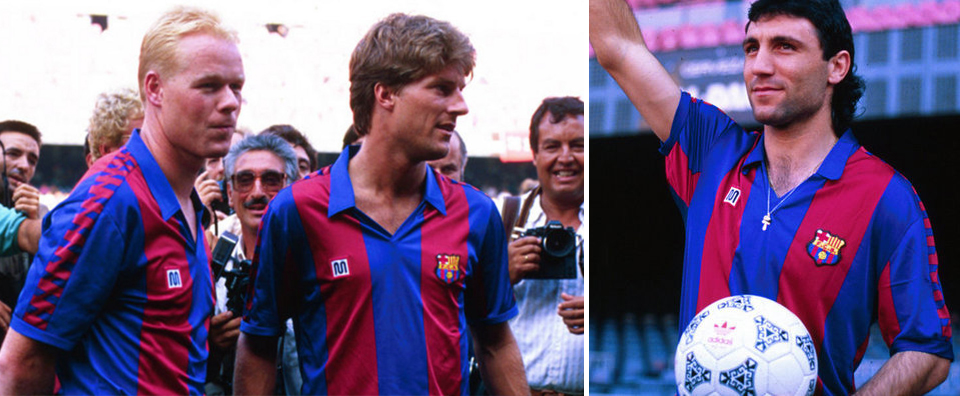
Bakero, Beguiristain, Salinas, Eusebio; Koeman, Laudrup, Stoichkov.
Lineker rejoined Venables at Tottenham Hotspur later that summer. Carrasco and Quini also left Camp Nou, with Dutch defender Ronald Koeman and the elegant Dane Michael Laudrup arriving. 1989-90 turned out to be the final season for Barcelona’s now familiar kit, in which they had experienced such extreme highs and lows. In 1990 the shirt was modified for the first time since 1981 with the inclusion of a subtle stripe detail woven through the fabric of the shirt. By now Cruyff had begun to assemble what became known as the “Dream Team”, signing the Bulgarian Hristo Stoichkov and plucking homegrown prospects Guardiola and Ferrer from the “B” team. Barcelona finally won the league at Cruyff’s third attempt in 1991, initiating a period of domination that would last for four seasons. Despite losing that year’s Cup Winners’ Cup Final to Manchester United (in which Barça reject Hughes scored twice) the Catalans maintained their momentum in Europe the following season, reaching the European Cup Final at Wembley, where once again they faced Italian champions Sampdoria. A typically close but absorbing contest was settled in extra-time by a bullet-like free-kick from the boot of Koeman. In recognition of the occasion, at the final whistle the team quickly threw on home shirts for the trophy presentation (they’d worn an orange away kit during the match), in which the club’s official captain Alexanko (now playing the role of substitute) was given the honour of hoisting aloft European football’s ultimate prize.
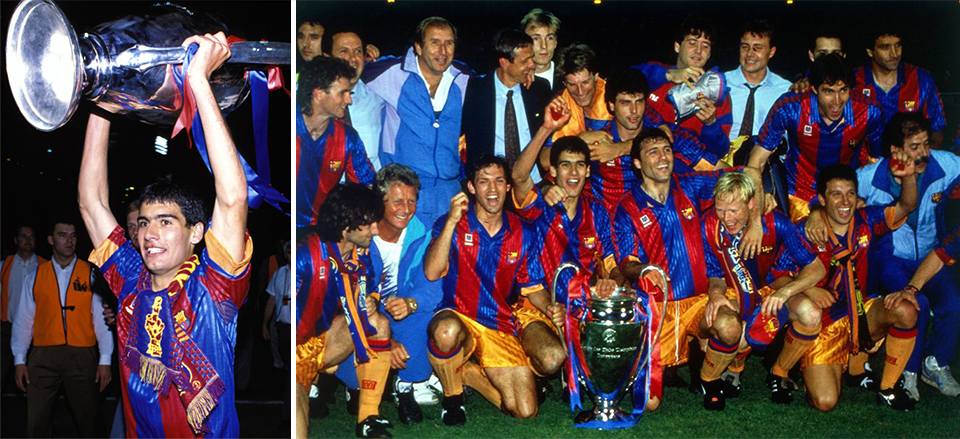
Barcelona’s Wembley victory proved a fitting conclusion to its long association with Meyba. In 1992 the club struck a deal with the Turin-based company Kappa, whose Madrid-white branding along the sleeves of the new shirt caused immediate consternation among fans. Cruyff’s “Dream Team” won four Liga titles in a row, their one misstep a 4-0 capitulation at the hands of Milan in the European Cup Final in 1994. Following Cruyff’s departure, Bobby Robson led a Ronaldo-inspired Barça to a record fourth Cup Winners’ Cup success, before Louis Van Gaal and Frank Rijkaard achieved further success in the Dutch tradition. But it was under Cruyff disciple Guardiola that the Dutchman’s footballing vision reached its extreme peak, and inevitable conclusion. Between 2009 and 2012 Barcelona became an almost unstoppable force at home and in Europe, developing a style of possession football that became known by the onomatopaeic term tiki-taka. Of course, this period of consistency was contrasted by annual — and at times radical — changes to the club’s once-iconic strip. A complete reversal from the 1980s, when Barça changed everything but their kit.

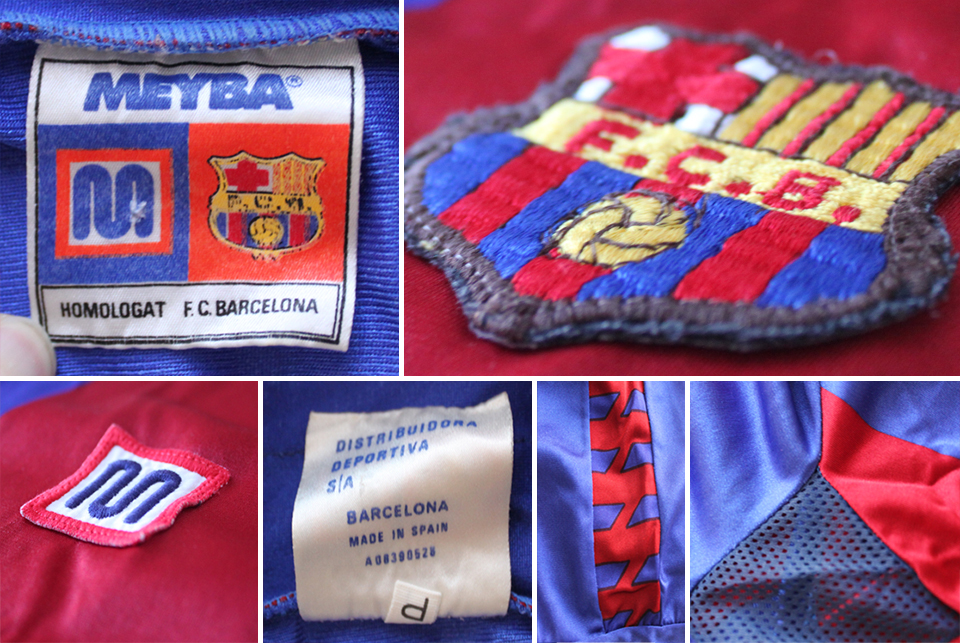

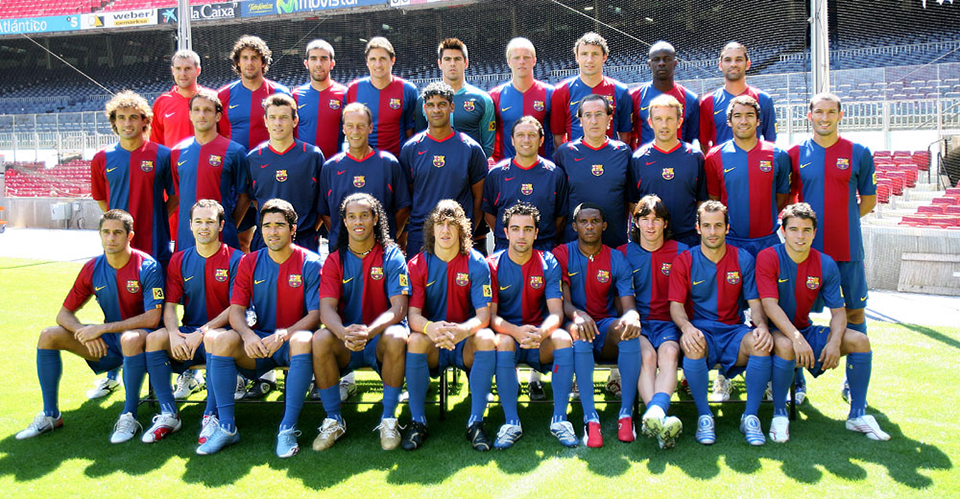
Coming soon…
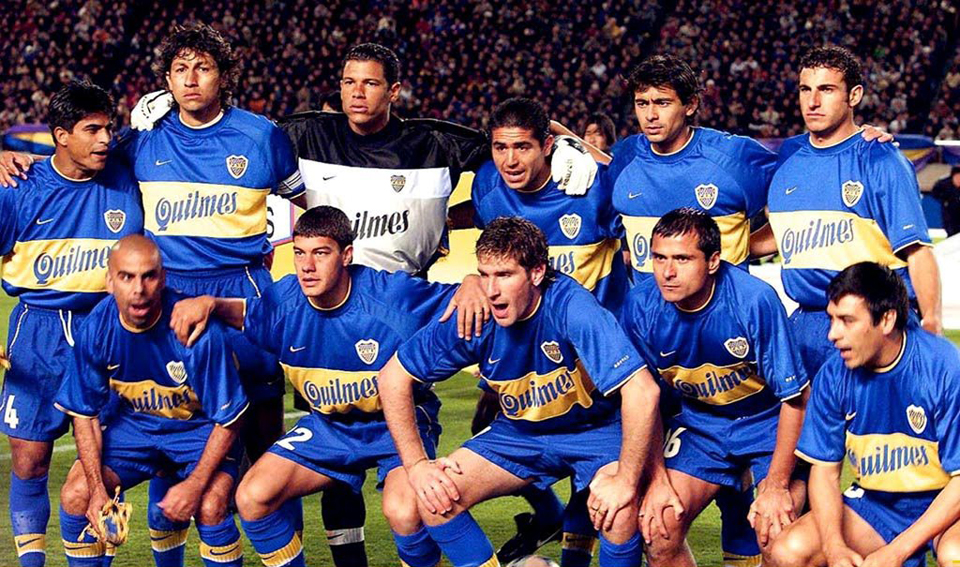
Coming soon…
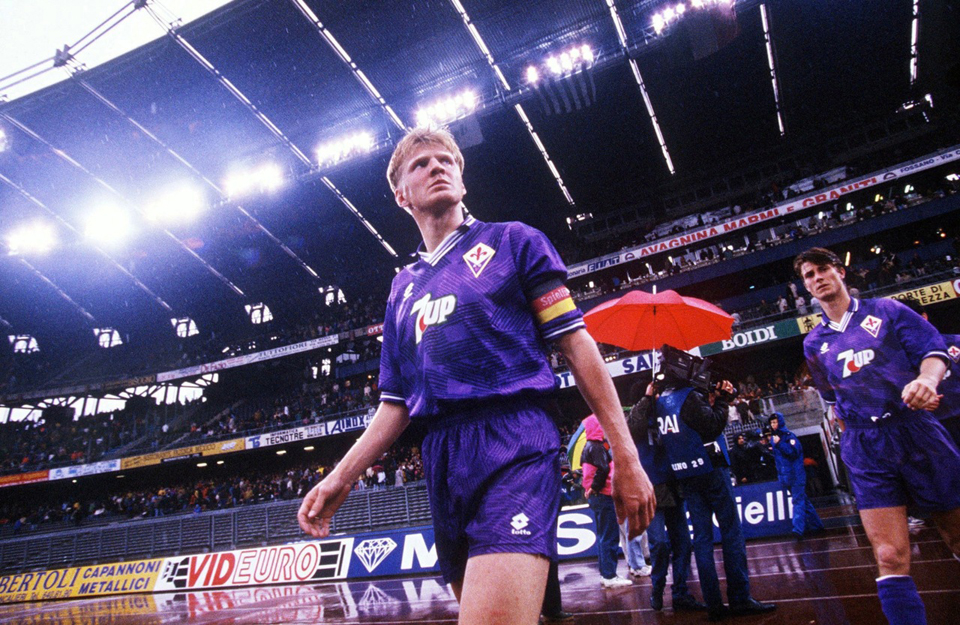
In the summer of 1990 Fiorentina entered a new era. Having just suffered their worst Serie A finish in over a decade under Italian World Cup-winner Francesco Graziani, it was then revealed that Roberto Baggio would be sold to Juventus for a world record 25 billion lire. The transfer of la Viola‘s star player to its bitterest rivals provoked violent protests on the streets of Florence, coming just two days after Juventus had beaten Fiorentina in the UEFA Cup Final. Even Fiorentina’s headquarters in Piazza Savonarola came under attack, duly prompting the club’s owners, the Pontello family, to hand over operations to film producer Mario Cecchi Gori.
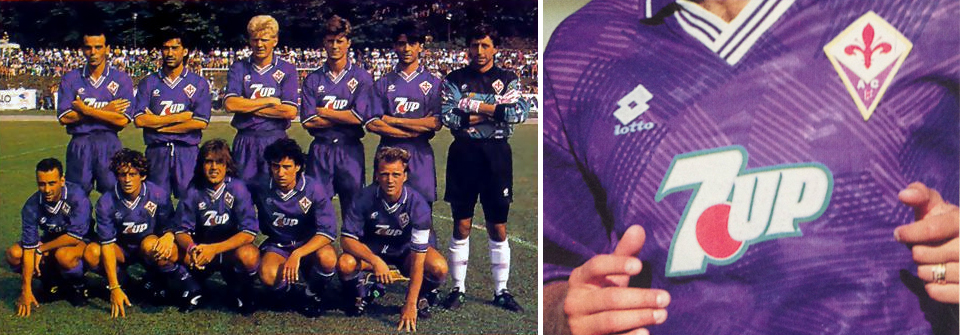


The team failed to improve in its first season without Baggio, for which Cecchi Gori immediately attempted to make amends. In what was undoubtedly the most significant business deal of his presidency, Cecchi Gori signed young Argentine forward Gabriel Batistuta. The dashing striker had just helped lead his country to victory in the Copa America in Chile, after having scored thirteen goals for Boca Juniors the previous season. He continued this impressive scoring rate in Italy, finding the net thirteen times in his debut season in Serie A. But despite Batistuta’s goals Fiorentina still failed to challenge the league leaders, finishing a mediocre twelfth for a third successive campaign. In the summer of 1992 it was hoped that the arrival of blond German midfielder Stefan Effenberg and elegant Danish winger Brian Laudrup — the latter a freshly-crowned European Champion — would make the difference.
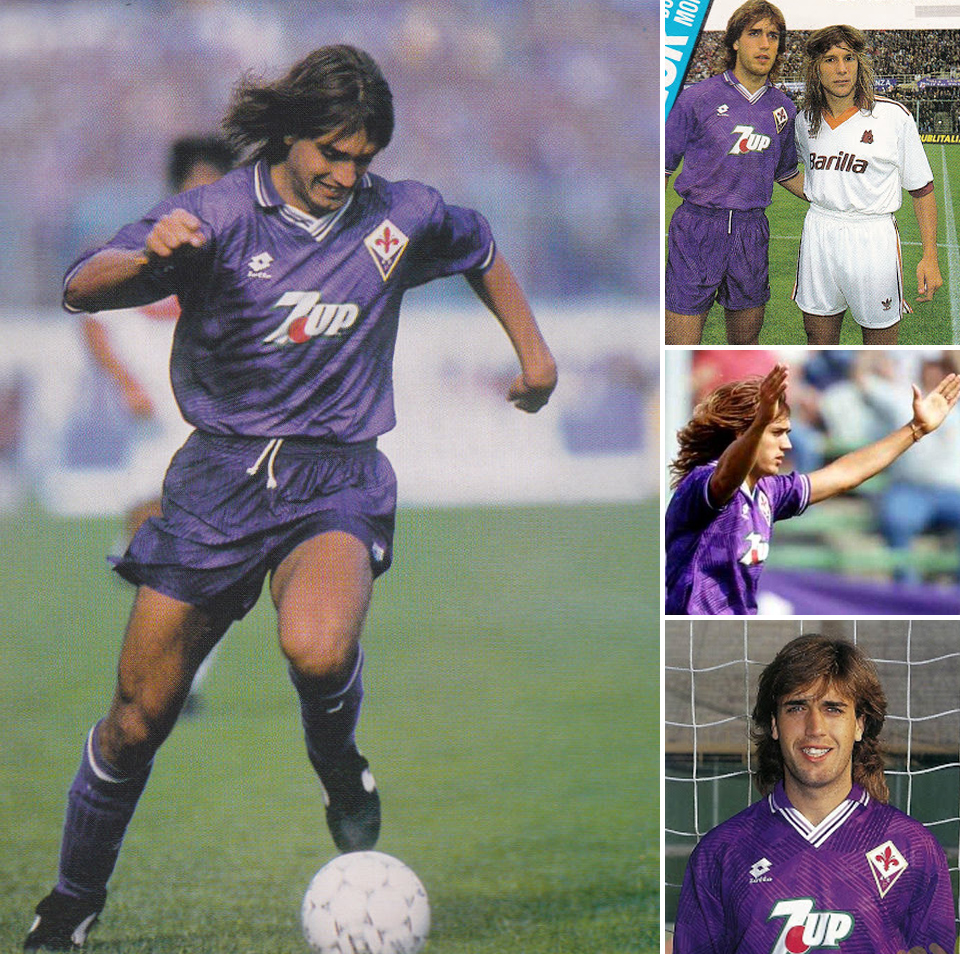
Luigi Radice, who’d coached Fiorentina to sixth place in 1974, was again at the helm, having replaced Brazilian Sebastiano Lazaroni early in the 1991-92 season. His team started slowly, drawing three of its first four games. Although goals were easy to come by — Fiorentina put seven past a hapless Ancona in week three — keeping them out at the other end proved more difficult, and after five games they’d already conceded thirteen goals, seven of which came at home against a ruthless Milan side. The team from Florence responded well to this setback but impressive victories against Sampdoria, Roma and even Juventus were countered by defeats to Cagliari, Napoli and Atalanta. This loss at home to the side from Bergamo proved Radice’s last in charge, and he was replaced by another former Viola coach, Aldo Agroppi.
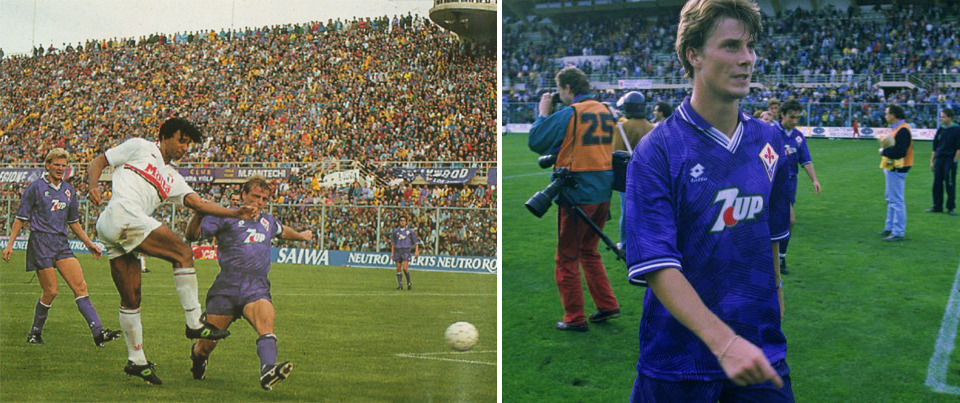
At the time of Radice’s sacking Fiorentina were in a respectable sixth in Serie A. By the time Agroppi was let go following a 3-0 hammering at Juventus, the team had plunged towards the relegation zone, having racked up just two victories (against Pescara and Cagliari) under his reign. With just five games remaining former striker Luciano Chiarugi was handed the unenviable task of rescuing Fiorentina’s season. But the damage had already been done, and three more draws and a defeat against Atalanta left the team in the drop zone. Yet la Viola were still in with a chance of avoiding disaster as they went into their final game, in which they played host to Foggia. By half-time the home side had galloped into a four-goal lead and looked to have made themselves safe, despite fellow strugglers Brescia winning at Sampdoria. But with ten minutes of the season remaining, Udinese midfielder Stefano Desideri’s spectacular equaliser against Roma lifted his side above Fiorentina, whose fate was suddenly taken out of their own hands. There was still time for more late goals in Florence (the game finished 6-2) but the final minutes were played in a funereal atmosphere. Despite finishing with the same points total as Brescia and Udinese, and just six points behind seventh-placed Sampdoria, the unthinkable had become a reality: Fiorentina were relegated to Serie B after fifty-four consecutive years in the top flight.
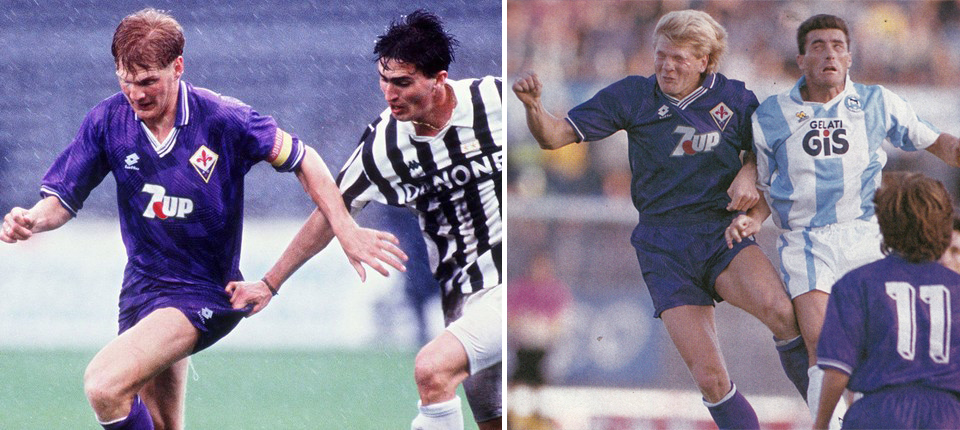
The man asked to lead the club back to Serie A was Claudio Ranieri. The former Napoli coach decided that Serie B was the perfect place to thrust a handful of promising youth talents — including goalkeeper Francesco Toldo and forwards Anselmo Robbiati and Francesco Flachi — into the first team. These additions joined an already strong squad. Although Laudrup was quickly offloaded to Italian champions Milan, the rest of Fiorentina’s players seemed content to help the side out of the mess in which it now found itself. Batistuta and Effenberg were commended for showing such loyalty at the risk of losing their places in their respective national sides, and in a World Cup year no less. The Argentine, now known by the Florentine faithful as “Batigol”, again found the net sixteen times during the 1993-94 campaign, atop a scoring chart that also included future Serie A legends Oliver Bierhoff (Ascoli), Enrico Chiesa (Modena), Filippo Inzaghi (Verona) and Christian Vieri (Ravenna).

Fiorentina’s kit from 1991 to 1993 was produced by Lotto, in a design that matched the template worn by the Dutch national team in the same period. In 1991 the club ditched the stylised “F” logo reverted to a traditional kite-shape crest. In 1992 the shirt saw small modifications to the collar and sponsor, which changed from Giocheria (an Italian toy company) to the internationally-recognised soft drink 7-Up. It was Fiorentina’s away shirt that season that drew most attention for its unfortunate swastika-like motif hidden within the purple pattern across the sleeves and shoulders. The shirt was worn in four away games before the now infamous design flaw was pointed out, after which la Viola reverted to a plain white strip. I bought the 1992-93 home shirt from Casa dello Sport, a veritable mecca for football shirt enthusiasts located in Via de’ Tosinghi in the heart of Florence’s centro storico (I later picked up the shorts and socks to match). Fiorentina kept the same look during their season spent in Serie B, although the kit was now manufactured by the German company Uhlsport. When the side returned to Serie A in 1994 a new sponsorship deal was struck with Tuscan ice cream company Sammontana.
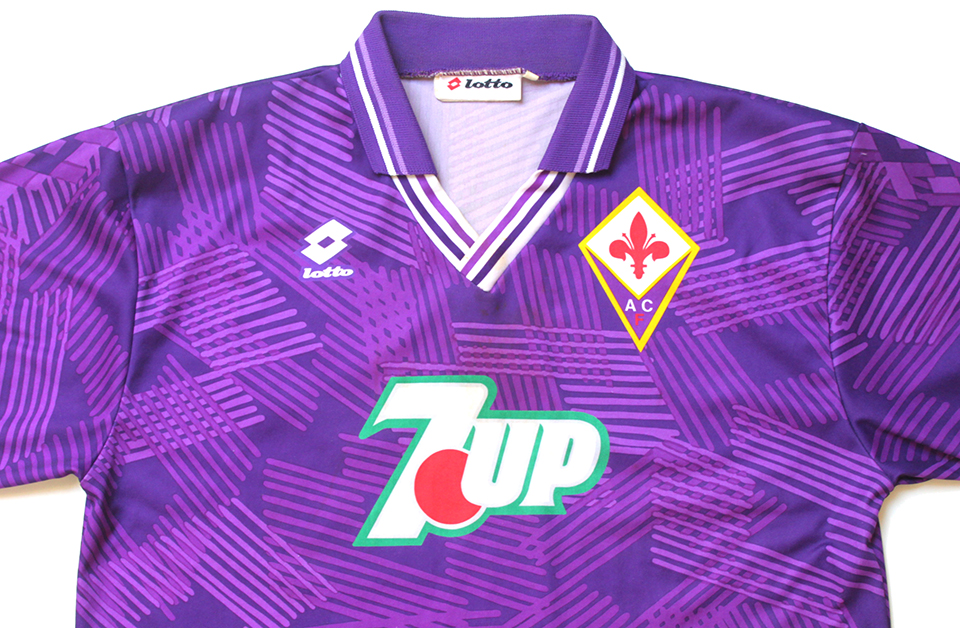
My first ever visit to the Stadio Artemio Franchi occurred while la Viola‘s were languishing in Serie B, in a league fixture against Modena in April 1994. The match was played under a torrential downpour; ironically Fiorentina’s free-flowing goalscoring form had completely dried up, and the game finished goalless. Nevertheless, in the end Fiorentina bounced back to Serie A comfortably, eventually finishing on top of Serie B, five points ahead of second-placed Bari. Sadly Mario Cecchi Gori didn’t live to see the side gain promotion, having died in late 1993, at which point the club was taken over by his son, Vittorio. With Effenberg returning to Borussia Mönchengladbach following promotion, the club now needed to bolster their squad if they were to make an impact in Serie A. Brazilian Marcio Santos arrived from Bordeaux, having just won the World Cup in the United States. But the central defender’s time in Florence was brief, and he moved on to Ajax after a single season in Italy. Fiorentina’s other big signing fared a little better. Manuel Rui Costa had broken into Benfica’s first team as a teenager and was already an established name in the Portuguese national side. To the delight of the Viola fans, the young Portuguese playmaker developed an immediate understanding with Batistuta, who found the net in the first eleven games of the season, beating a record held since the 1950s by Ezio Pascutti of Bologna. With his twenty-six strikes that season, the Argentine also equalled Kurt Hamrin’s record of most goals scored by a Fiorentina player in a single league campaign. But despite “Batigol” more than living up to his nickname, and Rui Costa’s emergence as one of Serie A’s finest number tens scoring, Fiorentina’s form began to slip after the new year, and they eventually finished a disappointing tenth, failing to qualify even for the UEFA Cup.
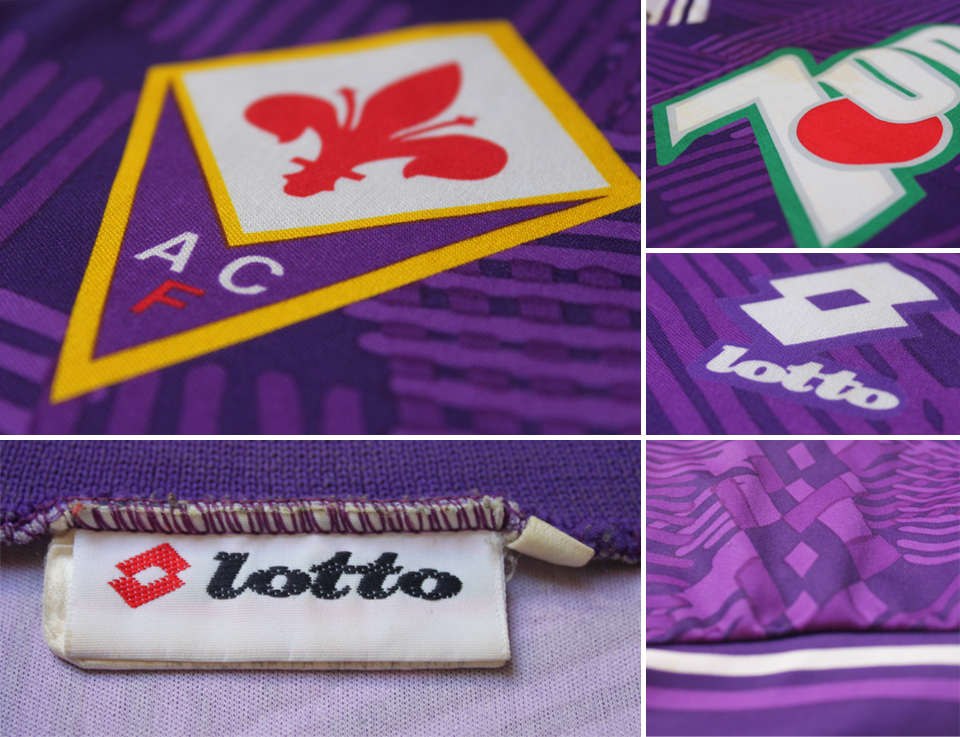
Yet the disappointment was tempered with the fact that Fiorentina had finally turned a corner. The nightmare of relegation was behind them, and in Batistuta they’d found a new hero to take over the mantle of Baggio. Over the next few seasons Fiorentina continued to grow stronger, with Batistuta, Rui Costa and Toldo remaining key men in a side that ultimately began to challenge for top honours at home and in Europe. But just when it seemed the club was enjoying its best spell in years, so the fun came to an abrupt halt. The 1990s had been certainly been a rollercoaster of a decade for Fiorentina, but it was nothing compared to what was to come, as la Viola entered the most turbulent and dramatic period in its history.
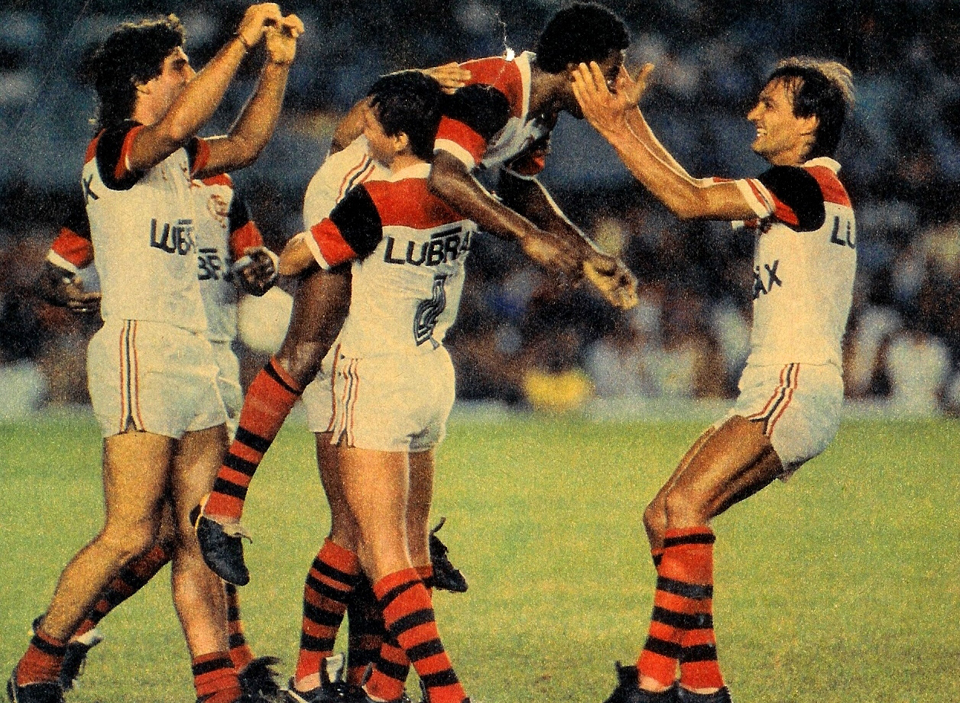
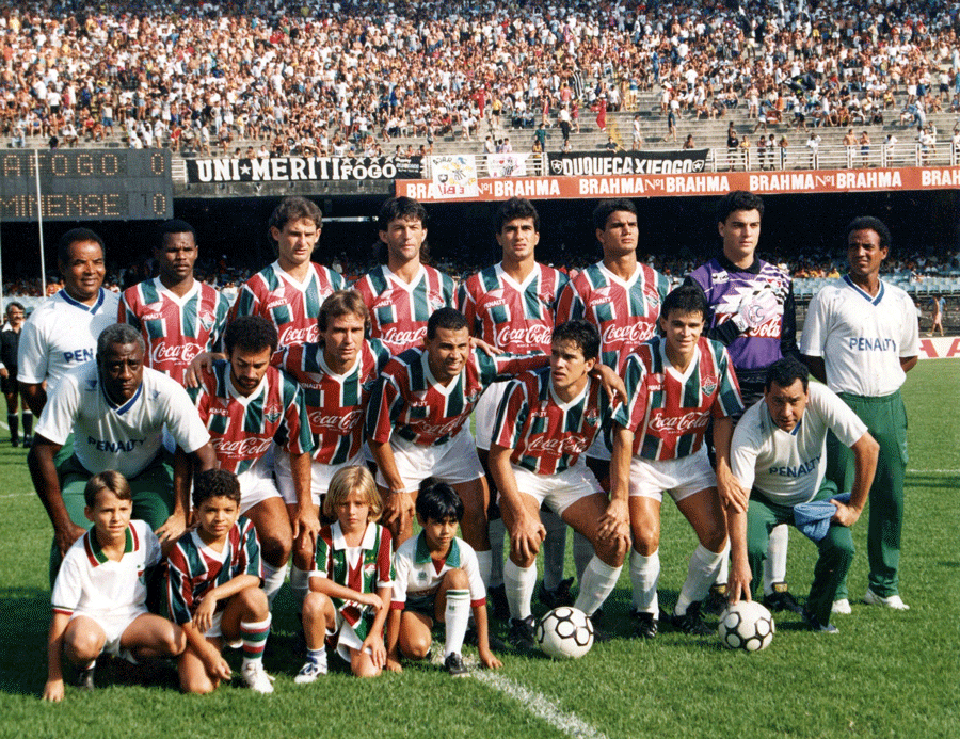
Coming soon…
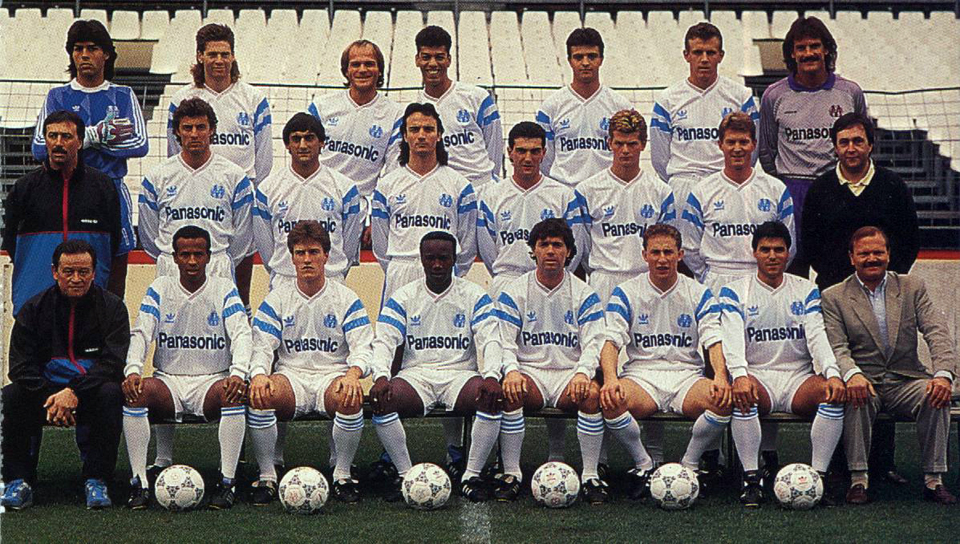
Coming soon…
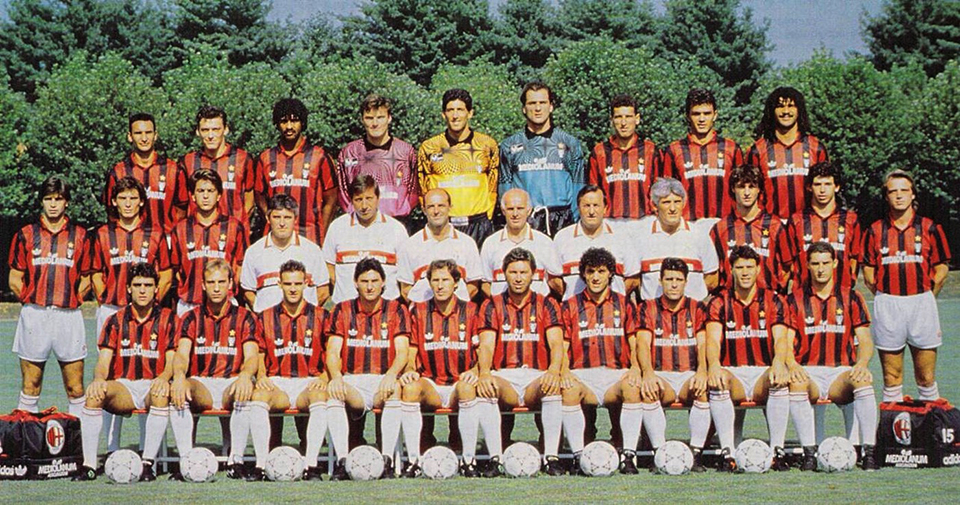
Success was so swift and so absolute for Silvio Berlusconi’s Milan, that it’s easy to forget when he had taken over the presidency the once prestigious club found itself ridden in debt, having spent two seasons in Serie B in the early 1980s. Though the team already boasted some talented local youngsters including Baresi, Maldini, Donadoni and Evani, their foreign stars were aging. Milan lacked that special player — a Maradona or a Platini — necessary to make the extra leap to domestic and European glory. In the summer of 1987 Berlusconi’s finances (funded at the time by his growing media empire) helped secure the talents of young Dutch stars Ruud Gullit and Marco Van Basten. That season Milan pipped Champions Napoli to the Serie A title, their first scudetto in nine years. Later that summer Gullit and Van Basten proved instrumental in Holland’s first major trophy, the European Championship, and after the tournament their international teammate, Frank Rijkaard, joined them at Milan.
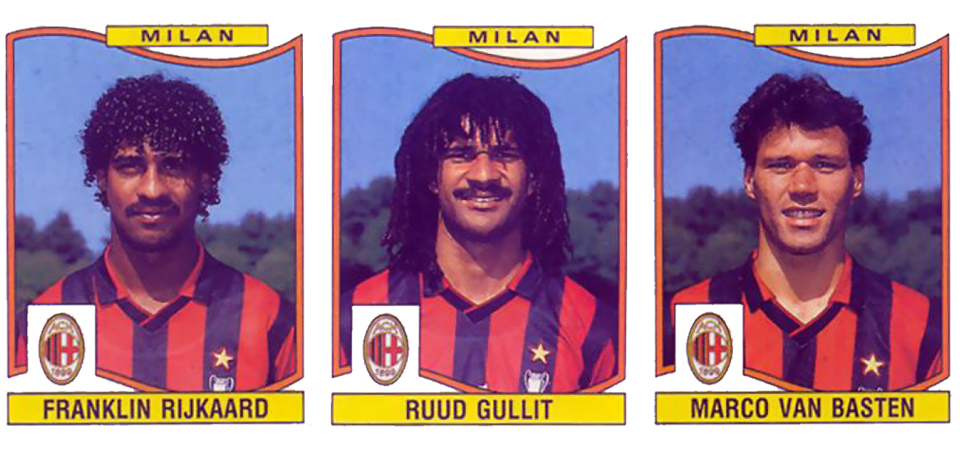
Berlusconi’s influence was not only economical. He insisted his side produce attractive, attacking football, and his power wielded an unprecedented control over transfers, team selection and technical aspects of the side’s preparation. In Arrigo Sacchi he found the ideal coach, an eccentric but brilliant man, who, despite fielding an imperviously strong back four, represented the antithesis of catenaccio. By the end of the decade Milan were once again the dominant force in Europe, winning back-to-back European Cups in 1989 and 1990, a trophy which had eluded them for twenty years. They topped those victories off on both occasions with successive triumphs in the Intercontinental Cup in Tokyo.
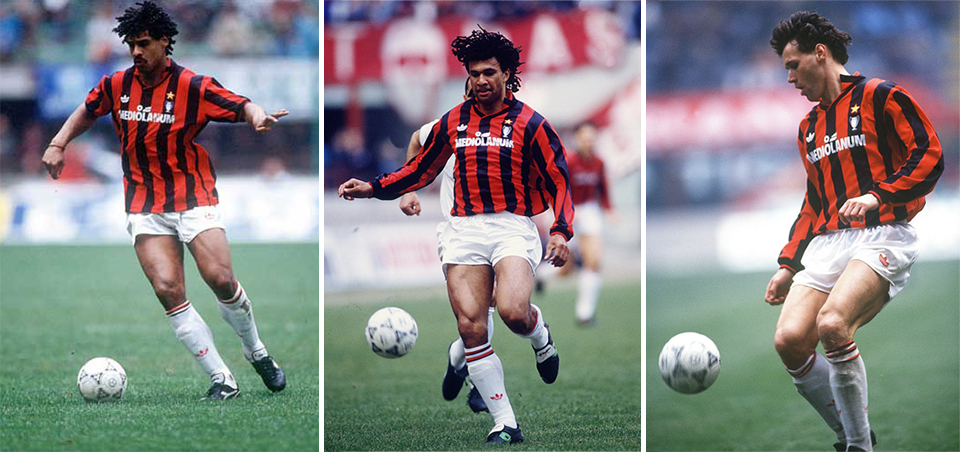
Through regular visits to Italy and my burgeoning fixation with calcio I’d become fascinated by Sacchi’s Milan side, and in 1991 I bought the famous maglia rossonera from a store in the northern Tuscan town of Aulla. Given the quality of its domestic league football in Italy was remarkably uncommercialised in those days. All the shirts in the shop were folded in their manufacturers’ plastic wrappers and stacked up to the ceiling; after inquiring about the Milan kit a lady climbed to the top of a ladder to retrieve my size. The shirt was only available with long-sleeves, which seemed impractical to me at the time (it was July) but wholly appropriate once I recalled images of San Siro shrouded in a thick fog, the rossoneri carving out victories from its frosty turf.
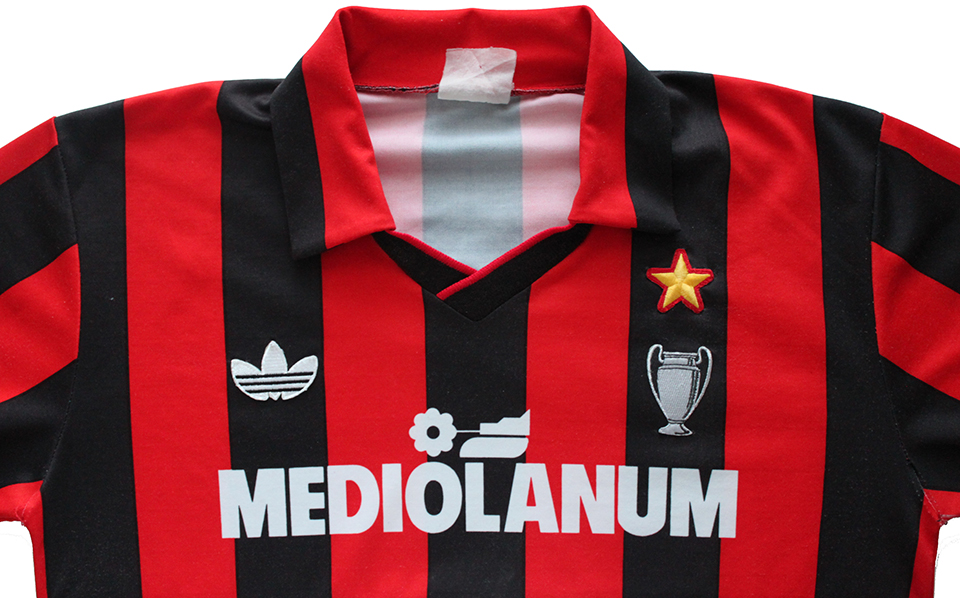
Milan had changed kit manufacturer in 1990, switching from Kappa to adidas, but the shirt had remained essentially unchanged for the last four years. The sponsor was still Mediolanum, Berlusconi’s own insurance company, named for the Latin word for Milan (the city). Above it on the right was the gold star which is earned after ten scudetto wins, beneath which sat an embroidered European Cup celebrating the fact that Milan were the current holders of that trophy (a nice initiative which never caught on). In the 1990-91 season Milan finished second in Serie A, a full five points behind scudetto winners Sampdoria, to whom they lost twice. A defeat to lowly Bari in the penultimate match of the season effectively ended their title hopes.
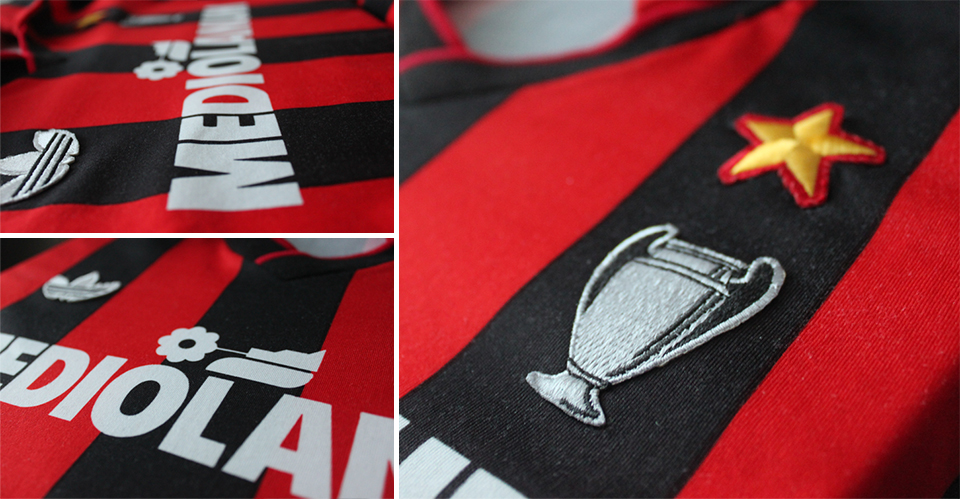
Milan’s good domestic showing was marred by a disastrous European Cup campaign. The rossoneri were aiming for a record-equalling third straight triumph in the competition, and came up against a talented Olympique Marseille team in the quarter-final. The first leg at San Siro ended 1-1; in the return match Chris Waddle had given the French champions the lead on 75 minutes when deep into injury time the floodlights at the Stade Velodrome failed. When power was restored after several minutes Milan refused to return to the pitch – a gesture which most interpreted as a desperate attempt to seize the opportunity for a rematch. Either way the tactic backfired: UEFA awarded a 3-0 result to Marseille, while Milan were banned from all European competition for the 1991-92 season.
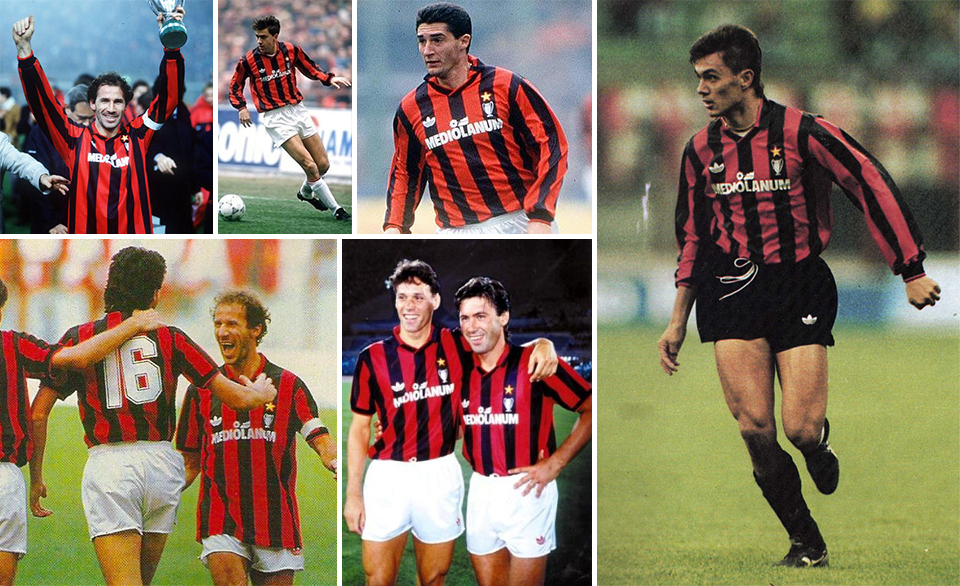
His time at Milan having clearly run its course, Arrigo Sacchi left the rossoneri that summer to take over the Italian national team. Under his replacement, Fabio Capello, Milan galloped to a record-breaking Serie A season, becoming the first side to win lo scudetto without defeat. Van Basten finished the season as top scorer with 25 goals. The shirt remained unchanged from the previous season, although since Milan were no longer holders of the European Cup, its presence on the shirt was replaced by the Intercontinental Cup; when Red Star Belgrade took this title away from them in December 1991 they reverted to a traditional Milan logo (incidentally the first appearance of the club crest on the rossoneri jersey).
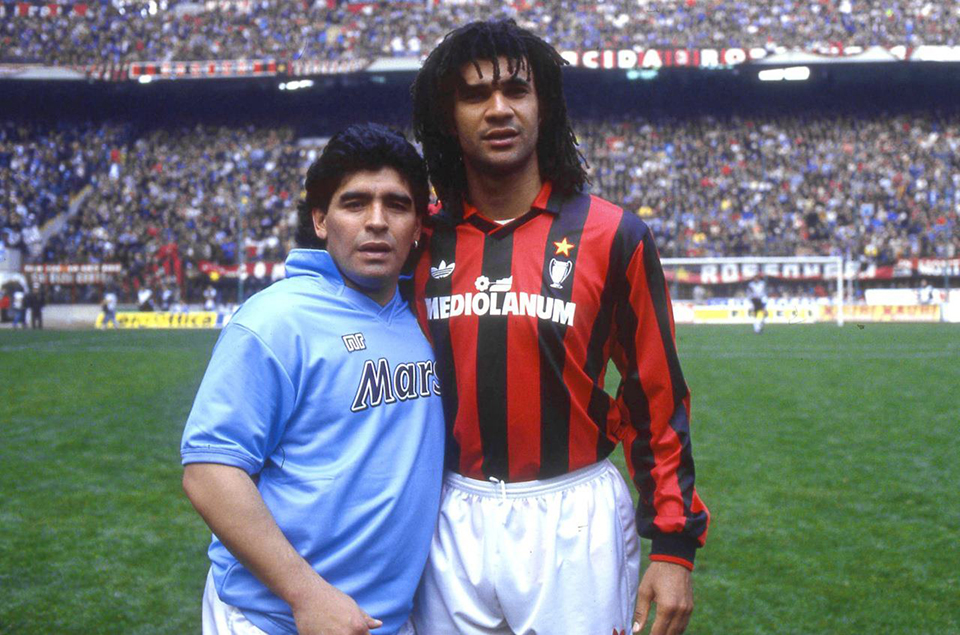
Milan collected three successive Serie A titles with Capello at the helm, and with success on the pitch changes to the kit remained subtle over the next few seasons. In 1992 a new sponsor arrived in the form of local dessert company Motta, and the following year a new kit deal was launched with the Italian sportswear manufacturer Lotto. Milan re-established their relationship with adidas in 1998, by which time they’d begun a long-term sponsorship by the German car giant Opel.
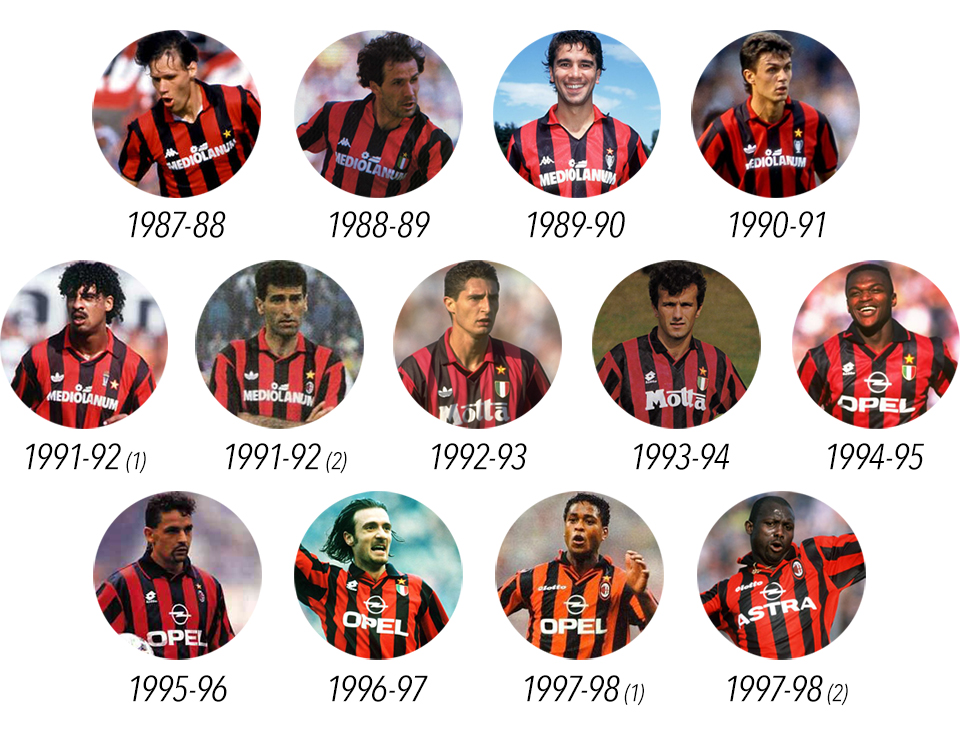
As Berlusconi ventured into politics his desire to create a European supersquad had resulted in the arrival of some big names — Savicevic, Boban, Papin, Raducioiu, Lentini — all of whom now competed for positions in Milan’s line-up. As Capello struggled with the challenge of keeping his bloated roster of big names happy, the Dutch trio’s dominance became undermined and was effectively broken up. The last time the three played together was the 1993 European Cup final in Munich, a 1-0 defeat by old rivals Marseille. That summer Rijkaard returned to Ajax and Gullit unexpectedly left for Sampdoria. Van Basten stayed at Milan, unaware he’d already played the last game of his career. He remained on the sidelines throughout the 1993-94 season, missing out on the team’s European Cup triumph and that summer’s World Cup, before finally announcing his official retirement in 1995 at the age of 30.
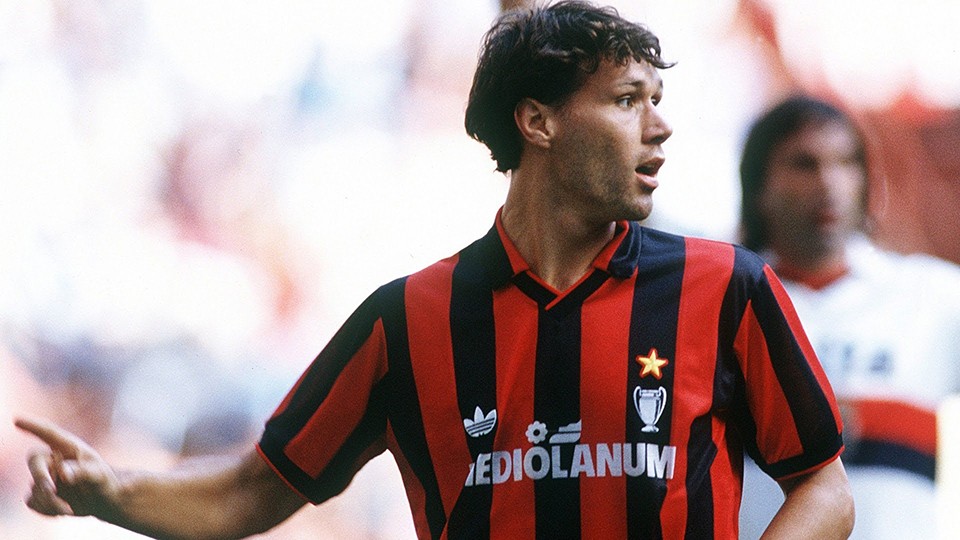
The same summer I bought my Milan shirt I also obtained a giant poster of a young Paolo Maldini wearing the same kit. It was free from the local supermarket in exchange for the purchase of several packets of apricot jam-filled Kinder brioche (my brother got Baggio). Something about the lighting always made me believe the photo was taken at the San Paolo in Naples (the ball is correct, Paolino wore short-sleeves in that fixture, and there’s clearly an ad for Mars in the background). Either way the poster hung pinned on my bedroom wall for over a decade, and now hangs framed in my apartment in New York, just feet from where I sit as I write this. A few years ago adidas relaunched the 1990-91 shirt as a limited edition replica, presumably for fans who now regretted not getting their hands on it the first time. Yet somehow the remake wasn’t quite the same. The sponsor was too large and the slightly bulbous adidas logo had been corrected. The material was too glossy, too well-made. It was as if the memories of both the shirt’s manufacturer and its consumer had been warped by the team’s own legend. Milan weren’t perfect, and nor was their shirt. But both came mighty close.
